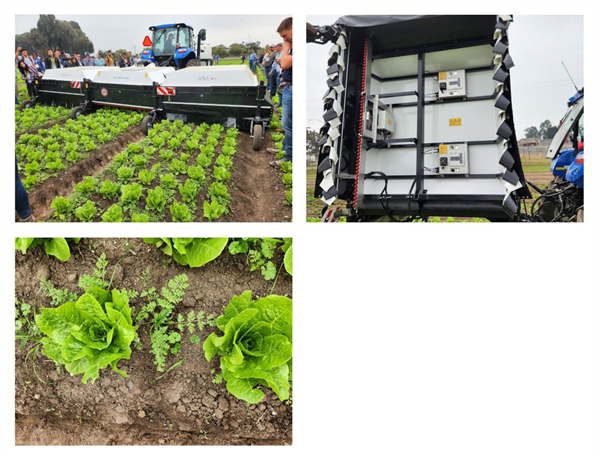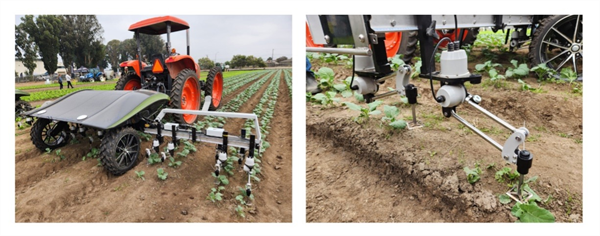
I hope you are frolicking in the fields of wildflowers picking the prettiest bugs.
I was scheduled to interview for plant pathologist position at Yuma on October 18, 2019. Few weeks before that date, I emailed Dr. Palumbo asking about the agriculture system in Yuma and what will be expected of me. He sent me every information that one can think of, which at the time I thought oh how nice!
When I started the position here and saw how much he does and how much busy he stays, I was eternally grateful of the time he took to provide me all the information, especially to someone he did not know at all.
Fast forward to first month at my job someone told me that the community wants me to be the Palumbo of Plant Pathology and I remember thinking what a big thing to ask..
He was my next-door mentor, and I would stop by with questions all the time especially after passing of my predecessor Dr. Matheron. Dr. Palumbo was always there to answer any question, gave me that little boost I needed, a little courage to write that email I needed to write, a rigid answer to stand my ground if needed. And not to mention the plant diagnosis. When the submitted samples did not look like a pathogen, taking samples to his office where he would look for insects with his little handheld lenses was one of my favorite times.
I also got to work with him in couple of projects, and he would tell me “call me John”. Uhh no, that was never going to happen.. until my last interaction with him, I would fluster when I talked to him, I would get nervous to have one of my idols listening to ME? Most times, I would forget what I was going to ask but at the same time be incredibly flabbergasted by the fact that I get to work next to this legend of a man, and get his opinions about pest management. Though I really did not like giving talks after him, as honestly, I would have nothing to offer after he has talked. Every time he waved at me in a meeting, I would blush and keep smiling for minutes, and I always knew I will forever be a fangirl..
Until we meet again.
At the 2023 FIRA USA Robotics and Autonomous Farming Solutions Forum last month, some of the latest automated and robotic technologies were demonstrated in the field. Several of the weeding technologies demonstrated are brand new to the U.S. and/or Yuma, AZ area. These included a 5.6 inch2 (2.4 x 2.4 inch) resolution fixed boomed spot sprayer (Fig. 1), a high precision, “turret gun” spot sprayer (Fig. 2) and a mechanical weeder that utilizes a unique rotating blade design and lidar for depth control (Fig. 3). Although the test runs were short, I was impressed with the performance and possibilities of these machines. Company representatives said that they would be traveling to Arizona for the season and would like to meet with growers interested in their technology. Company contact information can be found at their respective websites, or feel free to contact me if you would like additional information.

Fig. 1. Ecorobotix1 (Yverdon-les-Bains, Switzerland) precision weeding machine
demonstration at 2023 FIRA USA. The unit has modular, 6.6’ wide spray booms
equipped with 156 individually controllable spray nozzles to spot spray weeds
(top right). A vision system is used to detect weeds and spot spray resolution is
2.4 x 2.4 inches. Darker soil indicates where spray (water) was delivered to
targeted weeds (bottom).

Fig. 3. GreenTech Robotics’ Weed Spider1 (Kelvin Grove, New Zealand)
demonstration at 2023 FIRA USA. The unit is equipped with a vision system for
detecting crop plants and weeds, and blades that move in and out of the crop row
to remove in-row weeds. Lidar sensors are used to create a 3-D image of the soil
surface and control cultivating blade depth.
When I think about Lipid Biosynthesis Inhibitor herbicides, Post (sethoxidim) and Select (clethodim) come to my mind. A great description of these type of herbicides can be found at the Section VI of the Arizona Pest Control Advisor (PCA) Study Guide. They say a good teacher can explain complicated things in a simple way. Please read this explanation by Barry Tickes:
“These herbicides are known as ACCase inhibitors because they inhibit the production of acetyl-coenzyme A carboxylase (ACCase) which is an enzyme needed in the first steps of lipid or fatty acid production. Lipids are needed in the production of new membranes which, among other things, are needed in the production of cell walls. These chemicals move from the foliage to the growing points, only kill grasses, and have very little soil activity. Grasses stop growing immediately and slowly turn chlorotic or red and die usually in 7 to 21 days. These products are used to selectively kill grasses in broadleaf crops".
|
Classification |
Common |
Commercial |
Arizona crop |
|
Aryloxphenoxy |
fluazifop |
Fusilade |
Small grains, |
|
Cyclohexanediones |
sethoxydim |
Poast, Segment, |
Alfalfa, cotton, |
You need to see this .. time lapse photography shows the symptoms of Poast herbicide to wheat.